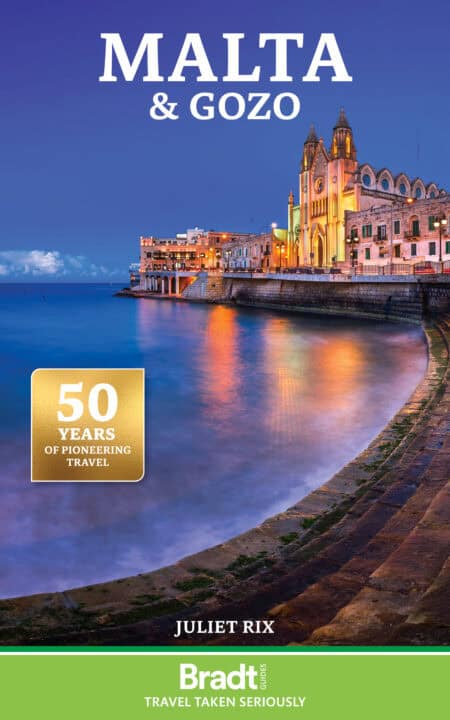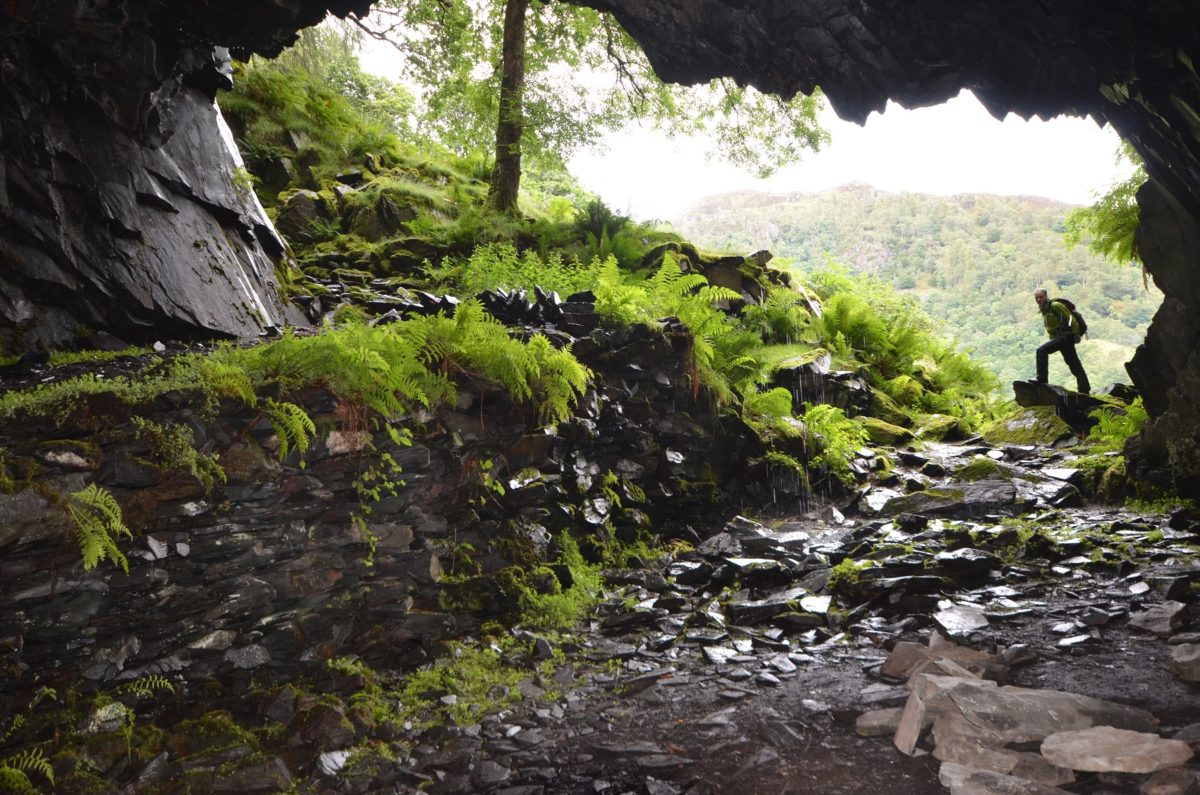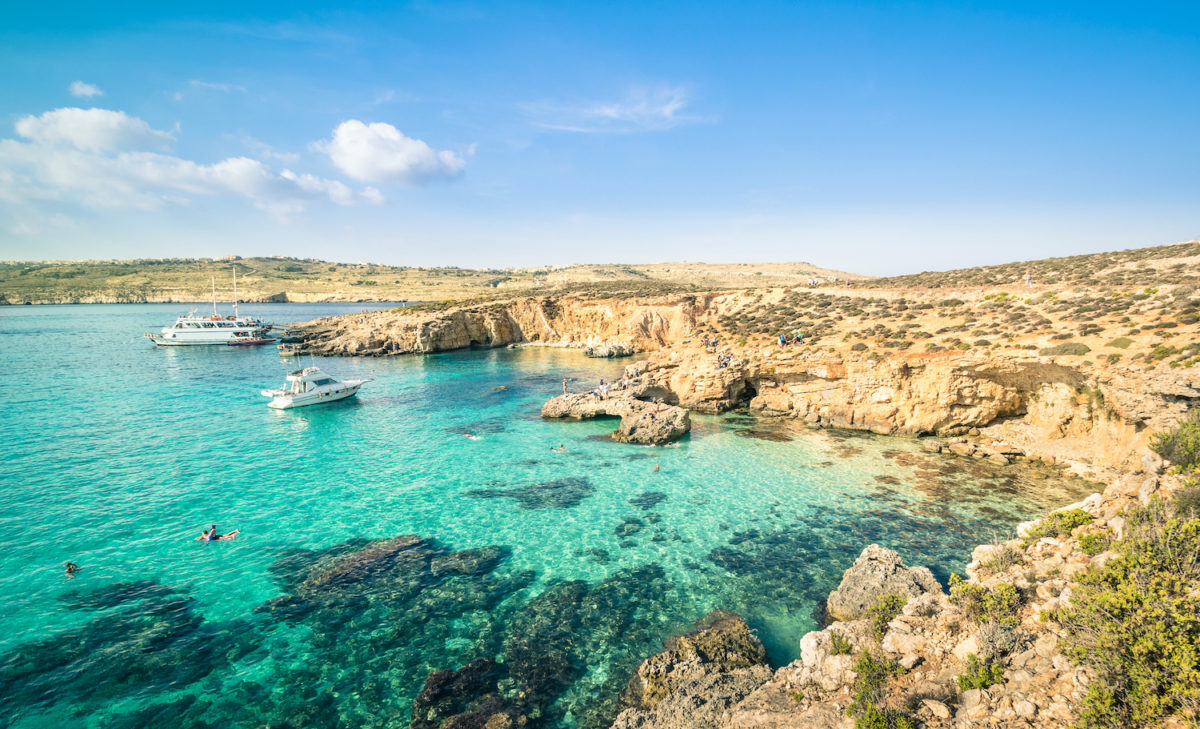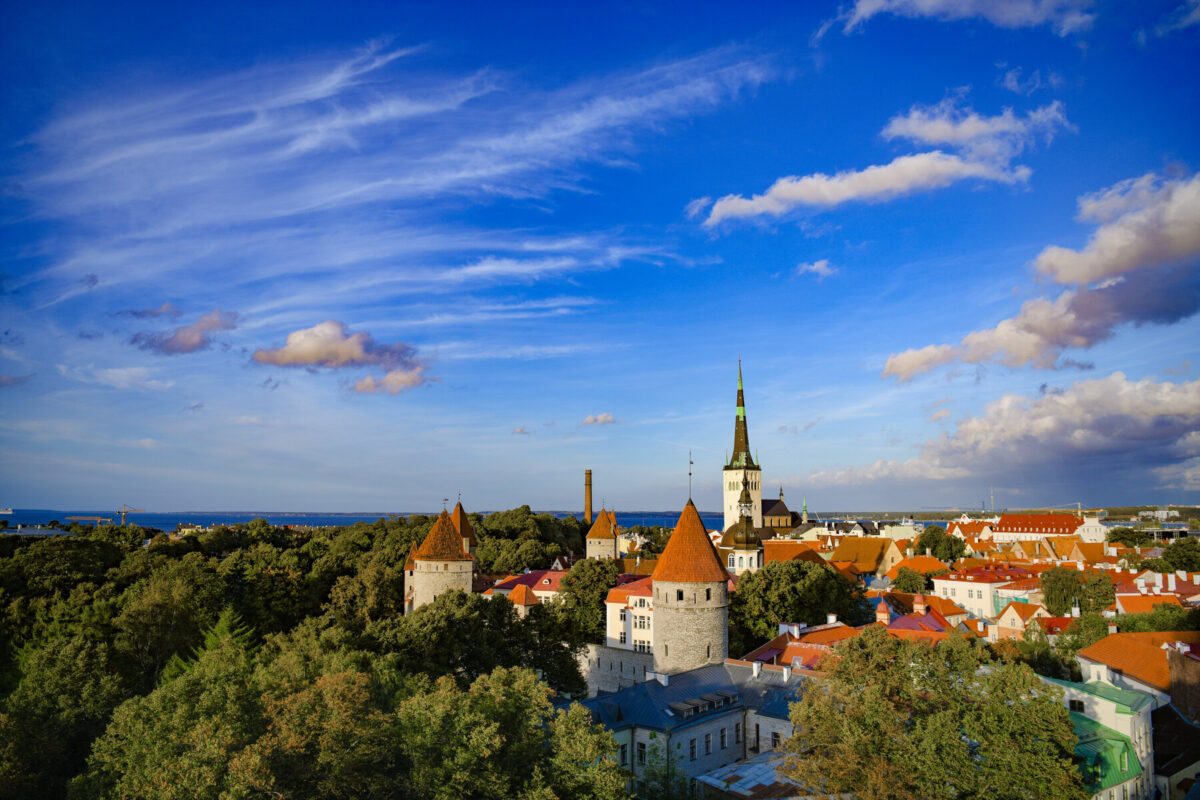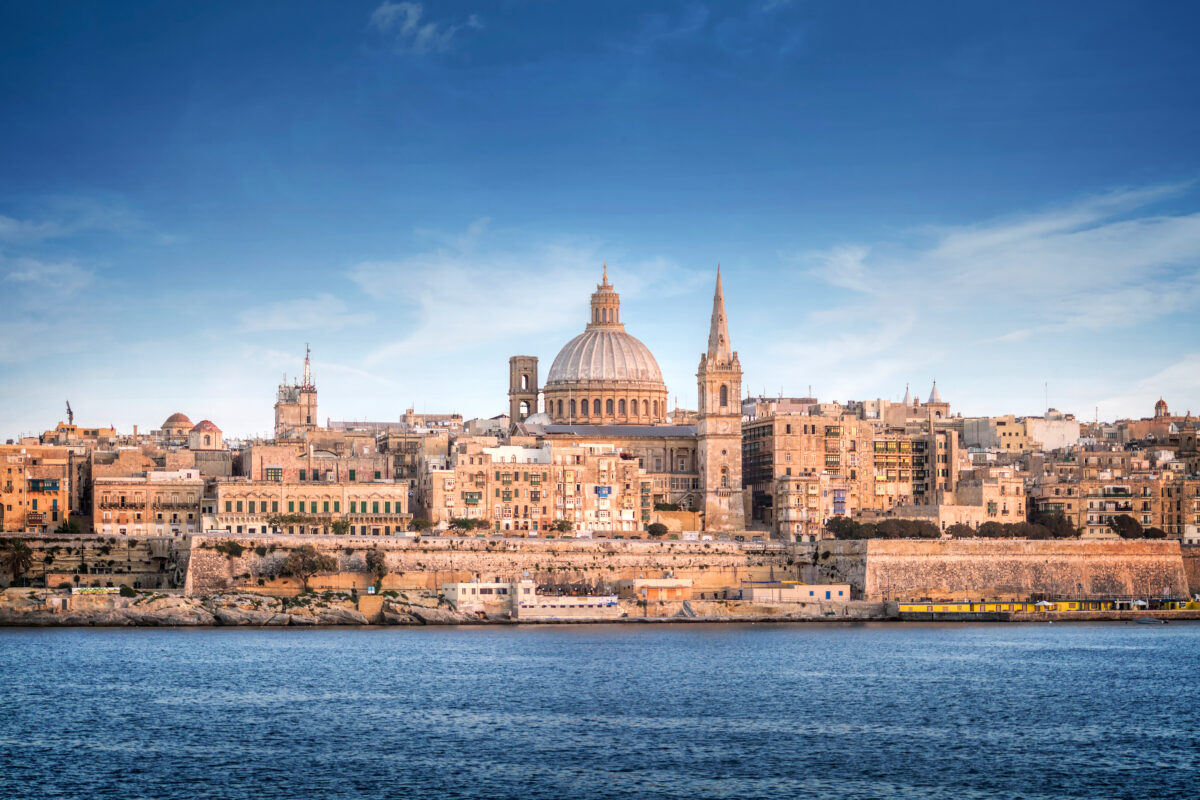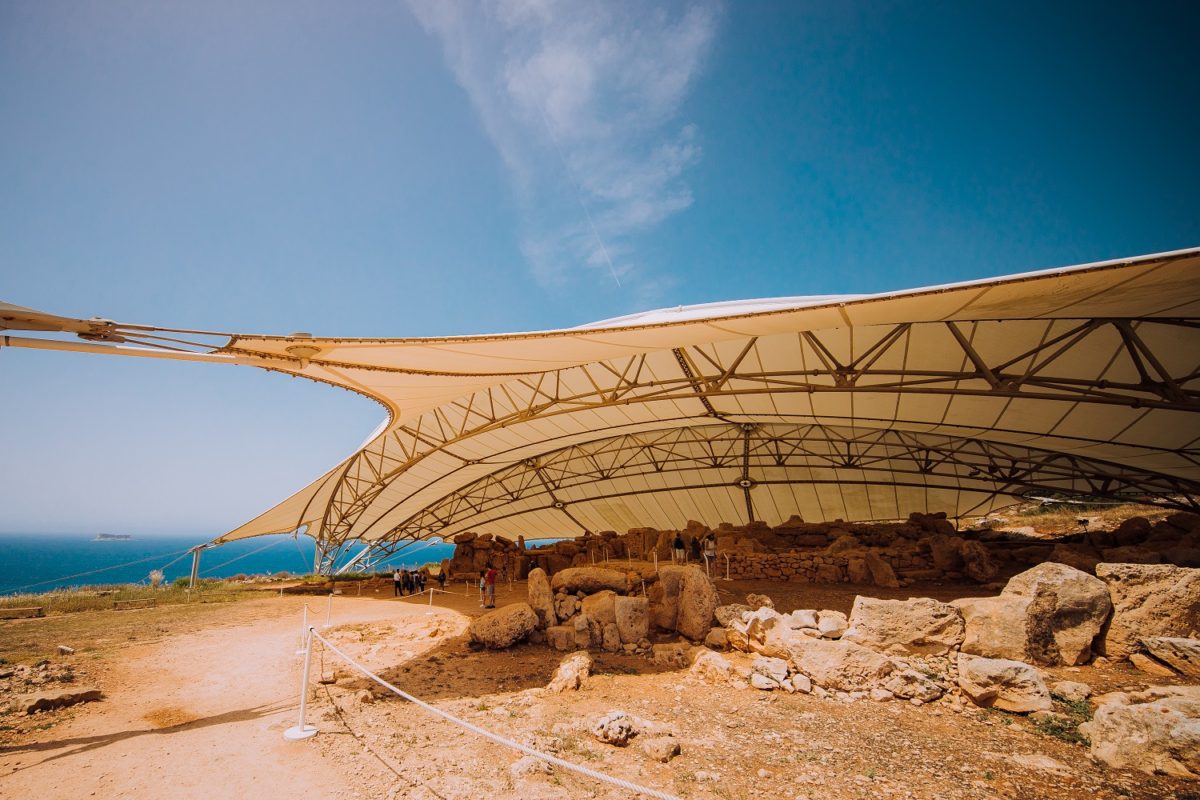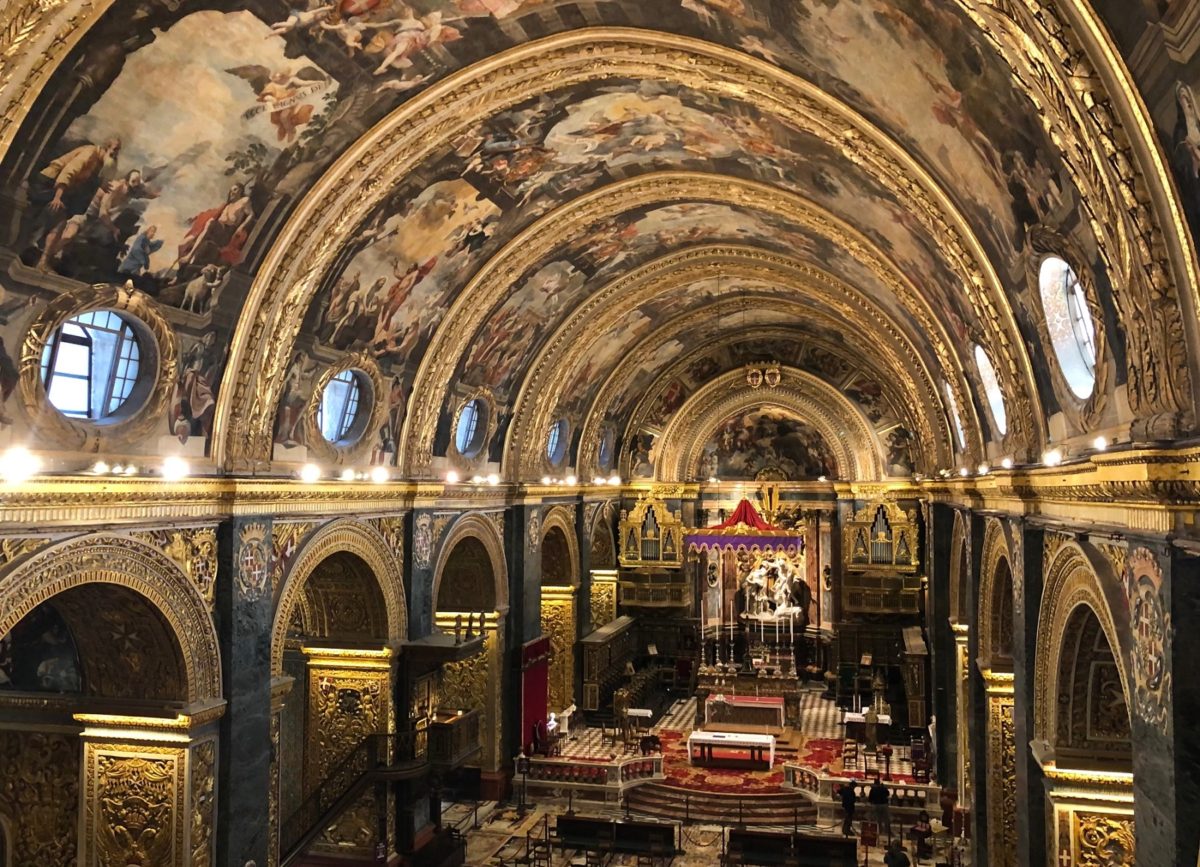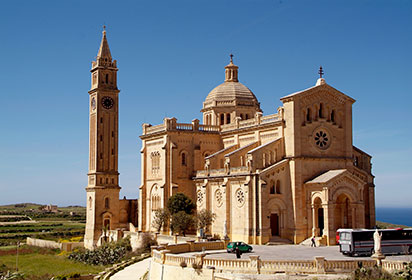Malta certainly has sunshine and beautiful clear blue waters in which I love to swim; and Gozo is a great place for a relaxing holiday. But its USP is surely its history – and prehistory – and the remarkable sites this has left behind.
Juliet Rix, author of Malta and Gozo: the Bradt Guide
Malta is unique. From its Arabic place names to its Italian-inspired cuisine, its Phoenician boats to its British red letter boxes and, of course, the spectacular legacy of the Knights of Malta, this small cluster of islands has absorbed a vast number of influences, yet has its own distinctive and beguiling character.
Malta has plenty of sun and sea, but its USP is its 7,000-year history. Marvel at its extraordinary Stone Age temples, complex megalithic architecture 2,000 years older than Mycenae. Descend into the rock to visit a 5,000-year old tomb complex, labyrinthine Roman-Byzantine catacombs, atmospheric WWII shelters and the secret command centre of the Allied Mediterranean Fleet in what was once the slave quarters of the Knights of St John.
Wander the narrow streets of the Knights’ 16th-century capital, Valletta (a UNESCO World Heritage City and a European Capital of Culture for 2018), between golden limestone buildings hung with painted wooden galleriji (balconies). Be dazzled by the Knights’ opulent Baroque cathedral and awed by their vast fortifications, most impressive when seen from a boat in the famous Grand Harbour, centre of Malta’s two Great Sieges.
When you have seen enough of the main island, hop onto the Gozo ferry and travel back in time to quiet, rural, friendly Gozo, the perfect place to round off your holiday, chill out and make the most of Malta’s 300+ days of sunshine every year and crystal clear Mediterranean waters.
For more information, check out our guide to Malta and Gozo
Food and drink in Malta and Gozo
Food
The Maltese love to eat almost as much as they hate to exercise. This unfortunate combination makes Malta a European record-breaker for both obesity and diabetes. Yet their love of food has a positive effect – Malta has a substantial number of very good restaurants, almost all serving locals and visitors alike.
Maltese food is heavily influenced by Italy. Pasta – usually fresh – is omnipresent, usually as a starter or ‘light’ lunch. Mains are mostly meat or fish. Few people in Malta are vegetarian, although understanding of the idea of vegetarianism and veganism has spread rapidly in the last few years and restaurants are beginning to get it.
Homemade cakes and puddings are very popular, often delicious and rarely sickly sweet. There is excellent local ice cream (try fig or passion fruit), which is widely available. Meals are generally accompanied by fresh Maltese bread (ħobż Malti), a crusty loaf rather like a French pain de campagne or an Italian ciabatta.
Many Maltese cannot get through the morning without a pastizza (confusingly translated as ‘cheesecake’), traditional mini pasties filled with local cheese (or ricotta) or mushy peas. These are sold in almost all cafés and tiny shopfronts known as pastizzeria.
Drink
The drinking age in Malta has recently been raised from 16 to 17, but nobody takes much notice of it, particularly in Paceville.
Malta produces its own wine and beer – most popularly Cisk lager (pronounced chisk). There is also a national soft drink, Kinnie (pronounced Keeny), which is a little like Coke but less sickly sweet (more like the traditional English dandelion and burdock). Kinnie is drunk by kids and adults alike and is sometimes used as a mixer with spirits. Malta’s favourite local liqueurs are limoncello – lemon zest, alcohol, water and sugar – and Bajtra, a very sweet liqueur made from prickly pears.
Health and safety in Malta
Health
Potential health problems
Malta is a European Mediterranean country with no specific health problems. It is hot in summer, so be sure to drink enough water, have a little extra salt if you are sweating more than usual and protect yourself from sunburn and the glare of the sun’s rays. Sunglasses are essential on water, and also in town where the sun comes off the creamy yellow limestone like a mirror.
Leishmaniasis is a protozoan infection spread by the bite of sand flies that have acquired disease, most commonly from dogs. Symptoms include a localised swelling or skin ulcer. A serious systemic disease (kala-azar) occurs even more rarely. Ensure that beds are off the ground and use a bednet that is impregnated with permethrin as sand flies are small enough to get through otherwise. DEET-containing insect repellents will also help to prevent sand-fly bites, and a concentration of 50–55% DEET is recommended. It should not be applied to broken skin or used on infants under two months old. If you need to wear it when also requiring sunscreen then apply the sunscreen first and the repellent second.
Travel clinics and health information
A full list of current travel clinic websites worldwide is available on ISTM. For other journey preparation information, consult NaTHNac (UK) or CDC (US). Information about various medications may be found on NetDoctor. All advice found online should be used in conjunction with expert advice received prior to or during travel.
Safety
Crimewise, Malta is an ordinary European destination. Crime against tourists is rare. Simply take the same common-sense precautions you would at home or in any western European country: don’t leave valuables visible in parked cars; keep an eye on your belongings; and if you plan to wander the streets in the early hours, take advice from locals or hotel reception as to where is safe and where is not (most places are safe). If walking alone (especially as a woman) late at night, the lower end of Valletta (towards St Elmo) is considered less safe than the upper end (though neither is exactly 1960s Harlem). Gzira has a red-light district, making it a less salubrious place for women alone at night. St Julian’s seafront in summer has so many late-night establishments that it is generally considered safe at most times of day and night.
Travel and visas in Malta and Gozo
Visas
Visitors from the UK and Ireland need a valid passport but do not need a visa. Nationals of EU countries with national identity cards may travel on these instead of a passport. There is no limit on how long an EU national may stay in Malta so long as he/she is economically self-sufficient. After the first 90 days, however, residence documents are issued.
Malta is a member of the EU Schengen area, giving it the same entry rules as other EU counties (except the UK and Ireland) for visitors from outside the EU. No visa is required for a stay of less than three months by those from the USA, Canada, Australia, New Zealand, Japan or most non-EU European countries (with the exception of Russia).
Other nationalities need to contact a Maltese embassy, consulate or high commission or where none exists, the embassy or consulate that looks after Malta (often the Italian or Austrian). Further information and downloadable visa application forms can be found on the Maltese Foreign Ministry website.
Getting there and away
By air
There is one international airport in Malta, in the southeast of the main island. It is just three hours’ flying time from the UK – less from southern Europe. There are numerous direct flights, on low-cost airlines and national carriers, scheduled and charter, including from many regional airports.
By sea
Ferries operate to Malta from Sicily, arriving at the Sea Passenger Terminal on the Valletta Waterfront. They take as little as 1½ hours to cross from Pozzallo on Sicily or three to four hours from Catania (the city next to Mount Etna). The ferries are fast catamarans that also carry cars, and are run by Virtu Ferries.
Getting around
Public transport on Malta is very good. There are no trains but you can get buses to almost everywhere and there are plenty of taxis. The ferry between Malta and Gozo is frequent and takes under half an hour. It goes from Ċirkewwa in the very north of Malta, about 45 minutes by car from Valletta (unless it is raining or rush hour, in which case it will take longer).
By bus
Gone are Malta’s iconic brightly painted 1950s Leyland ‘boneshakers’ that lasted until less than a decade ago. They have been replaced with boring modern single-decker buses with air conditioning (usually, and sometimes too much!). The main bus station is just outside the city walls of Valletta at City Gate where you will find a long row of bus stops and an information kiosk which also sells tickets. Unless you are in a huge hurry or going somewhere really off the beaten track, buses are a great way to get around. Most stops (other than bus stations/termini) are request stops so you need to stick your arm out to board the bus and push the button to get off.
Generally, bus numbers below 100 start in Valletta and buses with an X go to the airport, but there are exceptions so do check. No buses run inside the capital, as most of it is pedestrianised and even those that aren’t are narrow. The bus station is only a few minutes’ walk from the centre of town, however, and buses do run around the outside of the city walls, so you can get within a few minutes’ walk of anywhere in the city.
By taxi
Taxi fares from the airport are regulated but it is still worth agreeing the fare before getting in, as it is on all other trips in taxis, water taxis and horse-drawn cabs.
By boat
Travelling between Malta and Gozo is easy, with regular ferries taking less than half an hour. Boats also operate to the tiny island of Comino from both Malta and Gozo. There are ferries across the harbours either side of Valletta to Sliema and the Three Cities. Plenty of day cruises are on offer too including around Malta, around Gozo, harbour tours and day trips to Comino.
Self-drive
The Maltese love their cars. They will always drive rather than walk – even if it’s just a few hundred metres – and there is lots of interest in the best new model. There are therefore far too many cars on the roads, with some of them going rather faster than they should. Malta drives on the left (like the UK) – at least in theory. As one local put it: ‘We drive on the left … or on the right, or in the middle of the road.’ The standard of driving in Malta is described by the British Foreign Office as ‘poor’ and it can certainly be erratic.
What to see and do Malta and Gozo
Birgu
The oldest of the Three Cities, Birgu – or Vittoriosa – is a wonderful place to wander and has a few significant sights around which to plan a visit. When the Knights arrived in Malta in 1530, Birgu (or Il Borgo, meaning ‘the town’) was a fishing settlement and mercantile port with a fortress, Fort St Angelo, which the Knights regarded as thoroughly inadequate. It was, however, the main centre of population outside Mdina and its position next to the Grand Harbour made it the natural place for the maritime knights to settle, particularly as the Sciberras Peninsula on the other side of the harbour (where Valletta now stands) was at the time a barren hillside. The Hospitallers enlarged, embellished and fortified Birgu into their capital. Its layout remains largely unchanged with narrow streets radiating out from the central Victory Square, and there are many old buildings dating from the period between the arrival of the order (1530) and their post-Siege move to Valletta (1570s).
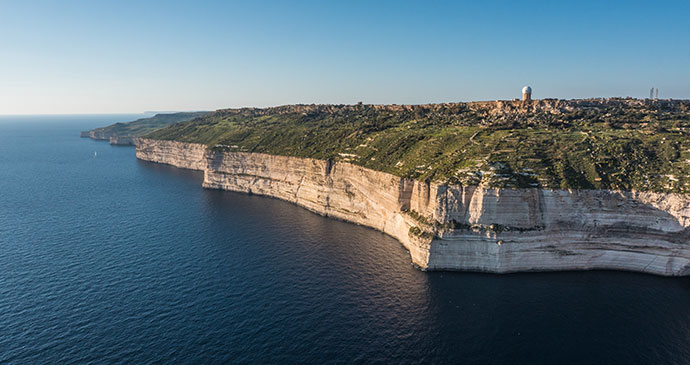
Dingli Cliffs
The highest place in Malta, the Dingli Cliffs fall a sheer and impressive 250m into the sea. Their flat rocky top is a great place for walking (except in the midday heat) and there is usually a breeze up here. It is also possible to drive along the edge of the cliff for some distance. The views of the Mediterranean are spectacular and this is a popular spot from which to watch the sunset. In spring the area is covered in wild flowers. Even in summer wild fennel and caper bushes flourish, and the smell of thyme wafts up as you brush the greenery underfoot.
During migration these cliffs are the first land many migrating birds have seen for hundreds of miles so they are an ideal place for birdwatchingif you aren’t too offended by the occasional presence of bird hunters. The Cliffs offers walks – self-guided with an informative map or with a guide – highlighting the plants, geography, history and prehistory of the area. You’ll discover all sorts of things you might otherwise have walked past, or even over. And you can then return to the restaurant and taste some of the edible ones! The restaurant generously welcomes any visitor to use their toilet facilities, whether eating there or not.
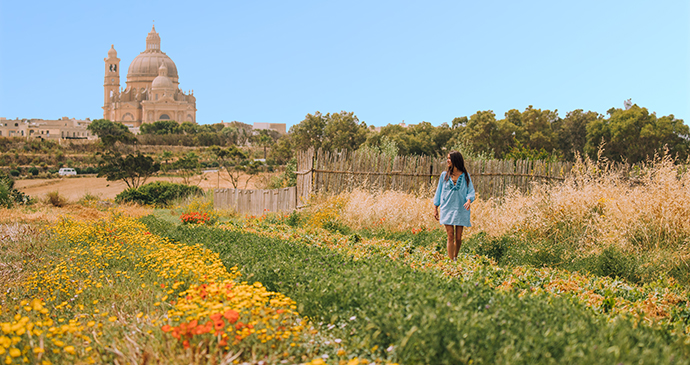
Gozo
Arriving in Gozo (Maltese: Għawdex, pronounced Owdesh), you may find an involuntary sigh passing your lips as you leave the port and head for open country. For all its holiday reputation and patches of beautiful landscape, Malta is a busy place; Gozo is more rural and much more laid-back. Residents say it runs on GMT – Gozo Maybe Time – but in fact timekeeping is not significantly more wayward than on Malta. Gozo just feels so much more relaxed. The two islands may be part of the same country and a mere 6km apart, but their atmospheres are completely different.
The Maltese tell some of the same jokes about the Gozitans that the English tell about the Irish, and traditionally life has been tougher on Gozo. But plenty of Gozitans seem to do very well for themselves on Malta – returning at weekends to their lovely unspoilt island. Some Gozitans go further afield and you will find houses on Gozo called ‘God Bless Australia’, ‘House of Canada’ or ‘Old Glory USA’ – there is even a model kangaroo outside a house near Calypso’s Cave – all in gratitude to the nations where the owner earned the money to build or buy the house.
Gozo is only 7km by 14km and has been largely bypassed by the rush to mass tourism that has blighted parts of Malta. There are a few patches of unrestrained building (particularly in Marsalforn) but there is plenty of Gozo that is unspoilt. It is more like Malta was a few decades ago – although the landscape is different. Gozo is made up of small flat-topped hills divided by fertile valleys – green even through most of the summer when Malta goes brown. Wild fennel (with its typical aniseed smell), caper bushes, carob and oleander are common sights along with the omnipresent prickly pear.
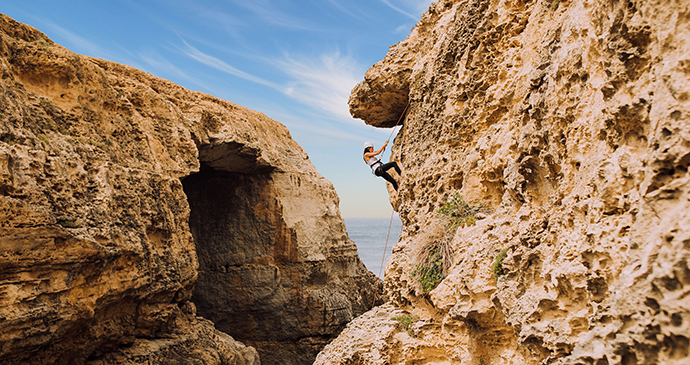
Church bells ring out over terraces of hillside agriculture and traditional limestone villages, at whose heart is usually an attractive square (sometimes actually a triangle). The square is dominated by an oversized church, often accompanied by a tiny police station marked with a traditional British blue lantern, a red phone box and sometimes an old-fashioned British red letter box built into a yellow limestone wall. Many villages have a café and a village shop on or near the square and you may even see an elderly lady sitting on her doorstep making lace.
If you fly over Gozo (which some international flights do) it looks like a cardboard cut-out, so sharply defined are its sheer cliff edges, especially on the northern side. Edward Lear visited the island in 1866 and wrote, ‘I drew every bit of it, walking fifteen or twenty miles a day – its coast scenery may truly be called pomskizillious and gromphiberous, being as no other words can describe its magnificence.’ He also started a poem, ‘Gozo my child is the isle of Calypso’, referring to Gozo’s identification with Homer’s island where the hero of the Odyssey spends seven years under the spell of the loving sea nymph.
Gozo has a couple of beautiful red-sand beaches and a multitude of rocky bays and inlets with inviting clear blue water for swimming and snorkelling, as well as some of Malta’s (and even the Mediterranean’s) best dive sites. And if the wind blows on one side of the island, ruining the swimming and diving, you can hop the few kilometres to the other – or find an inlet facing the other way – and you will probably find calm, welcoming waters.
There is history here too, of course. One of the oldest temple complexes, Ġgantija (after which the first temple phase is known) sits on a high plateau with commanding views of the Gozo countryside. The Citadel in the capital Rabat (or Victoria) is a mini Mdina, a tiny, impressively-walled medieval city, first fortified in the Bronze Age and refortified by every occupier of Gozo since.
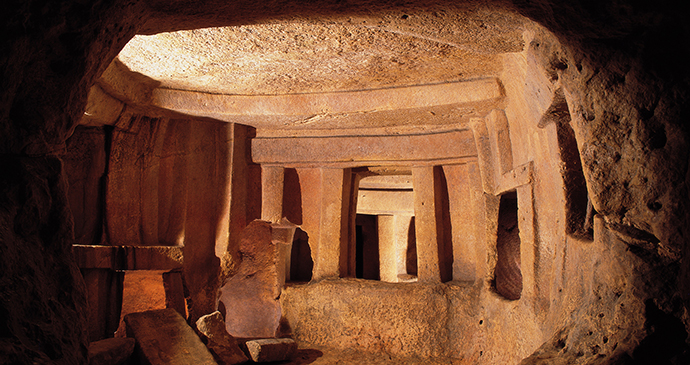
Ħal Saflieni Hypogeum
An unobtrusive doorway in a suburban street is the unlikely entrance to this extraordinary prehistoric site – a complex underground burial chamber, a temple of the dead that echoes the architecture of the above-ground temples. Built on three levels – the upper being the oldest (used from around 3800BC), the lower the latest (until about 2350BC) – the hypogeum probably served the same community as the Tarxien temples – and perhaps also the nearby Kordin temples. Protected from weather and human interference, the hypogeum offers a unique insight into the art and culture of the temple people.
Discovered in 1899, the find was not reported until four years later when a workman digging a cistern broke through into the hypogeum again. The site was first examined by a Jesuit priest and historian of Maltese antiquity, Father Manwel Magri. Unfortunately, in 1907 he was called away to do missionary work in Tunisia, where he died, and the records of his excavation have never been found. Temi Zammit took over in 1910 and his report on the site is still a key document. It was he who estimated that the hypogeum once held some 7,000 bodies. This might seem a lot on an island whose entire prehistoric population was probably around that figure, but it is not excessive bearing in mind that the hypogeum was in use for over 1,000 years.
Mdina
Mdina is a medieval walled town, but its history goes back far earlier. This was Malta’s first capital, its main town from at least Roman times, when it was called Melite, until the arrival of the Order of St John in 1530. The Knights needed to be closer to their ships and so based themselves in Birgu (Vittoriosa) on the Grand Harbour. The Maltese aristocracy, however, remained in Mdina and it continued to be an important centre.
This is an extraordinary place. Strategically perched on the edge of a plateau 150m above the surrounding countryside, it is a striking sight as you approach by road: sitting on top of its rock, impenetrable, lording it over all it surveys. Within its fortified walls there are very few shops and offices; it is mainly palazzi (grand old houses) and religious buildings set in a labyrinth of narrow streets, many of them (wonderfully) too small to take a car. There are almost no vehicles by day and just a few in the early evening as some of Mdina’s 400 residents (the only people allowed to drive here) come home from work. Mdina’s nickname, the Silent City, remains well earned.
Mnajdra and Ħagar Qim
Mnajdra and Ħaġar Qim are the most atmospheric temples to visit. They sit in an idyllic location well away from Malta’s urban sprawl, surrounded by blue sea, grey rock and, in spring, greenery and flowers. The view from a distance is now disturbed by two vast cream-coloured canopies that have been built to protect the temples from sun and rain, but there can be no doubt that this was necessary, and in some ways they enhance the visitor’s experience. These are the first temples to be the subject of a concerted effort to both conserve the buildings and make the temples more accessible to visitors. The European Regional Development Fund has ploughed €4.7 million into the project, funding the creation of a new visitor centre (well tucked into the landscape so that it does not intrude too much) as well as the protective canopies.
The visitor centre contains an attractive but uninformative audiovisual presentation and a very informative exhibition focusing on the interpretation, construction and use of the temples. There are also loos here (but no café) and a children’s room and free children’s activity sheets. Mnajdra and Ħaġar Qim are separate but neighbouring temple complexes, now with one visitor entrance. It is not clear in what way they were originally connected but we do know that they were used simultaneously and right up until the end of the Temple period (2500BC). They are, however, quite different from each other: the Mnajdra temples show well-preserved examples of many of the common characteristics of Malta’s temples, while Ħaġar Qim has some very unusual features. A pleasant 500m stroll separates the two; Mnajdra is usually less busy because coach parties often don’t make it that far.
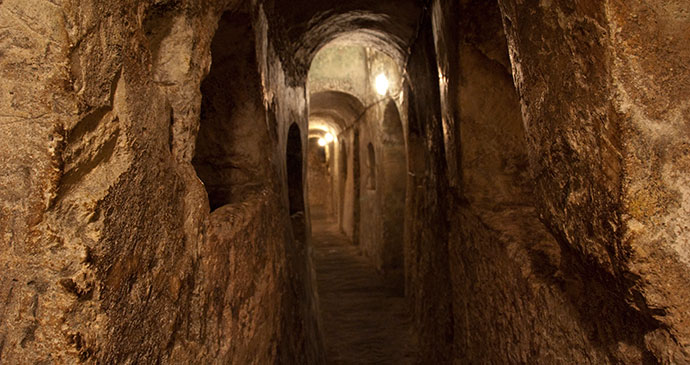
St Paul’s Catacombs
The largest, most impressive and most accessible of all Malta’s catacombs, this place is a must-see, with over 2,000m² of Romano-Christian (Byzantine) tombs. There are also a few Jewish and pagan tombs amongst the smaller hypogea across the road from the visitors’ centre. There is a wide variety of tomb types here, from simple loculi to once-extravagant canopied sarcophagi. The earliest is a small Phoenician burial, and the latest dates from shortly before the start of Arab rule in AD870. Most are 4th–8th-century AD. All sorts seem to have been buried here from tiny infants’ (see the little loculi in the walls) to important/wealthy adults.
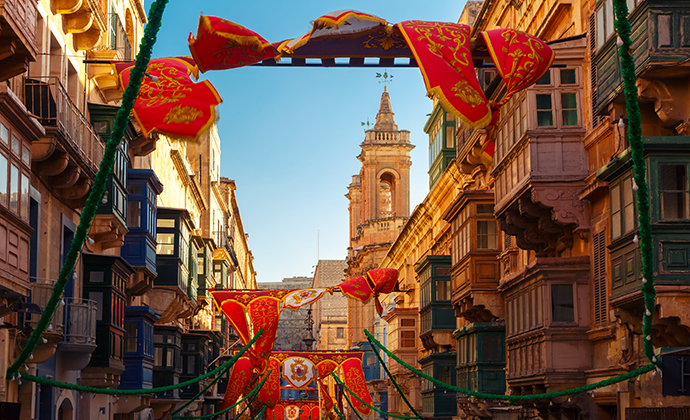
Valletta
Valletta must be the easiest capital city in the world to explore and is probably the most charming. A UNESCO World Heritage Site and European Capital of Culture in 2018, it is just 1,000m by 600m and sits on a peninsula surrounded on three sides by the sea and on the fourth by the suburb of Floriana. On all sides it is enclosed by massive 16th- and 17th-century bastion walls.
Initiated by, and named after, Grand Master of the Order of St John, Jean Parisot de Valette, who led the Knights to victory in the Great Siege of 1565, the city was begun in 1566 with the clear intent that it should withstand any future attack by the Ottoman Turks. It was designed by military engineers, the first city since Roman times to be built from scratch on a grid system.
Valletta’s main entrance, City Gate, and the area just inside it have received a very 21st-century facelift. Nothing 16th century has been destroyed; a rather scruffy bit of 1960s reconstruction has made way for a controversial but thoughtful redesign by contemporary architect Renzo Piano (creator of the London Shard). Nonetheless, Valletta remains fundamentally the Knights’ city. The layout is little changed and many of their buildings – the auberges where the Knights lived and worked in their eight langues, the churches and fortifications, and the Grand Master’s Palace – are still standing.
The grid layout makes the city easy to navigate and offers glimpses of bright blue water at many crossroads. The warm limestone of the old buildings is set off by painted wooden gallariji (closed balconies) that overhang the narrow streets. Much of Valletta is pedestrianised and even some of the shabbier streets towards the edge of town have real charm.
Republic Street (Triq Ir-Repubblika) runs right down the middle from City Gate at the landward end to Fort St Elmo on the seaward tip. It passes along the brow of the rock (Mount Sceberras/Sciberras) on which the city is built, making it the easiest route to walk, free from the dipping and rising of the streets on the hill’s slopes. Republic Street is also the busiest and when a large cruise ship pours out 1,000 people you may want to escape to a parallel street (a mere 10m or so either side). The hordes rarely venture beyond the main drag.
At one time or another, it is worth taking all the main routes through Valletta (there aren’t very many) as well as the diminutive side streets, some of which are little more than a stone staircase. Circling the city just inside the fortifications (sometimes on their top) is also a pleasant and enlightening walk. Valletta is admittedly not the easiest place for wheelchairs or buggies (though it can be done). For anyone able and willing to walk (even a few hundred metres), though, it is a simple and hugely rewarding place to explore, packed with things to see and do.
Related books
For more information, see our guide to Malta & Gozo:
Related articles
This isn’t one for claustrophobes.
There are some wonderful places to swim and sunbathe in Malta and Gozo.
Perfect for any hopeless romantic seeking an escape away from the crowds.
After 18 months, author Juliet Rix returns to her beloved Malta and Gozo and shares what’s changed on the islands.
Some of the oldest stone buildings in the world, Malta’s temples are unique.
Lilly Graves takes a self-guided tour of Valletta’s churches, with not a tourist in sight.
Anyone interested in churches is spoilt for choice in Malta and Gozo.
